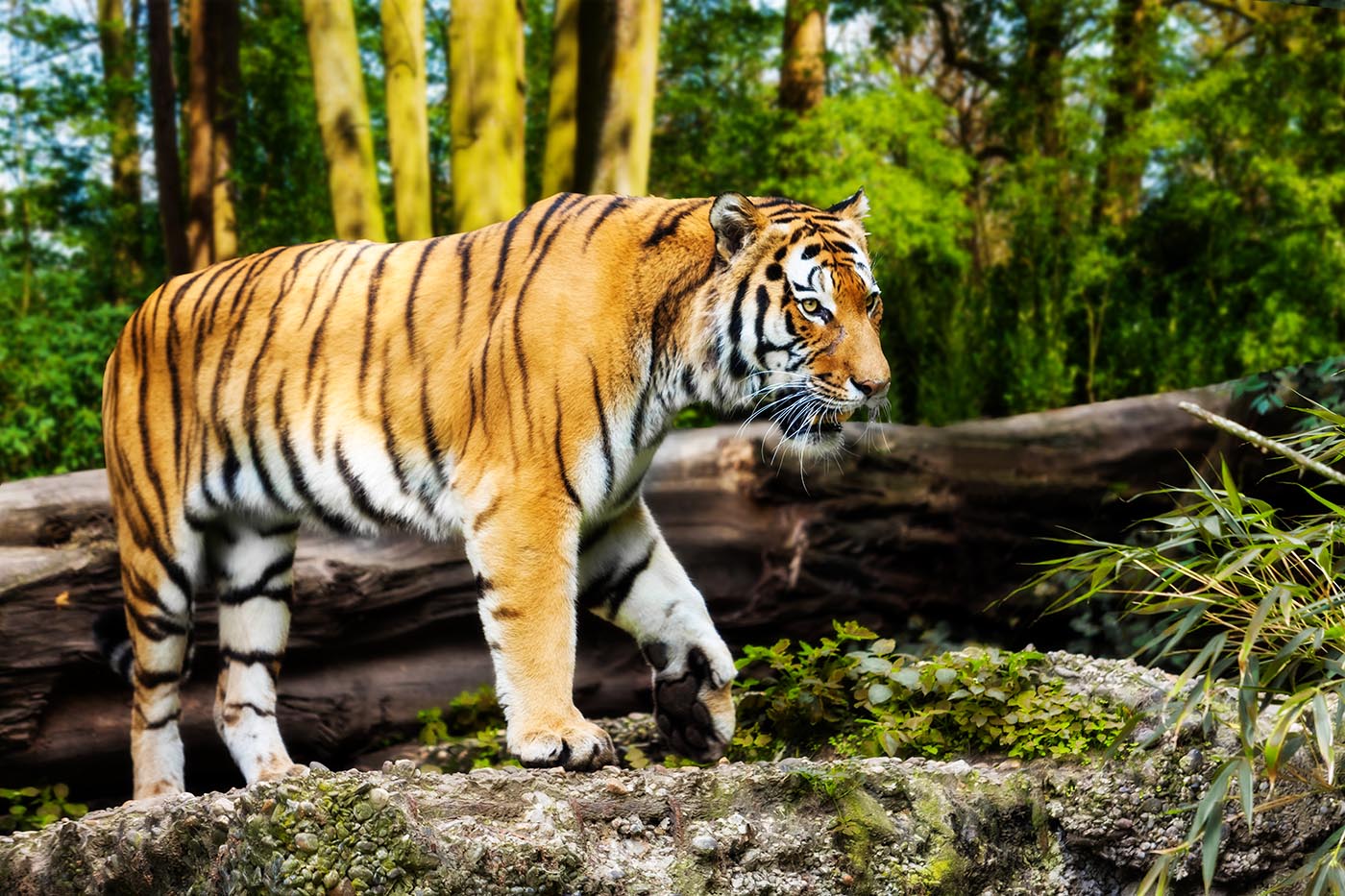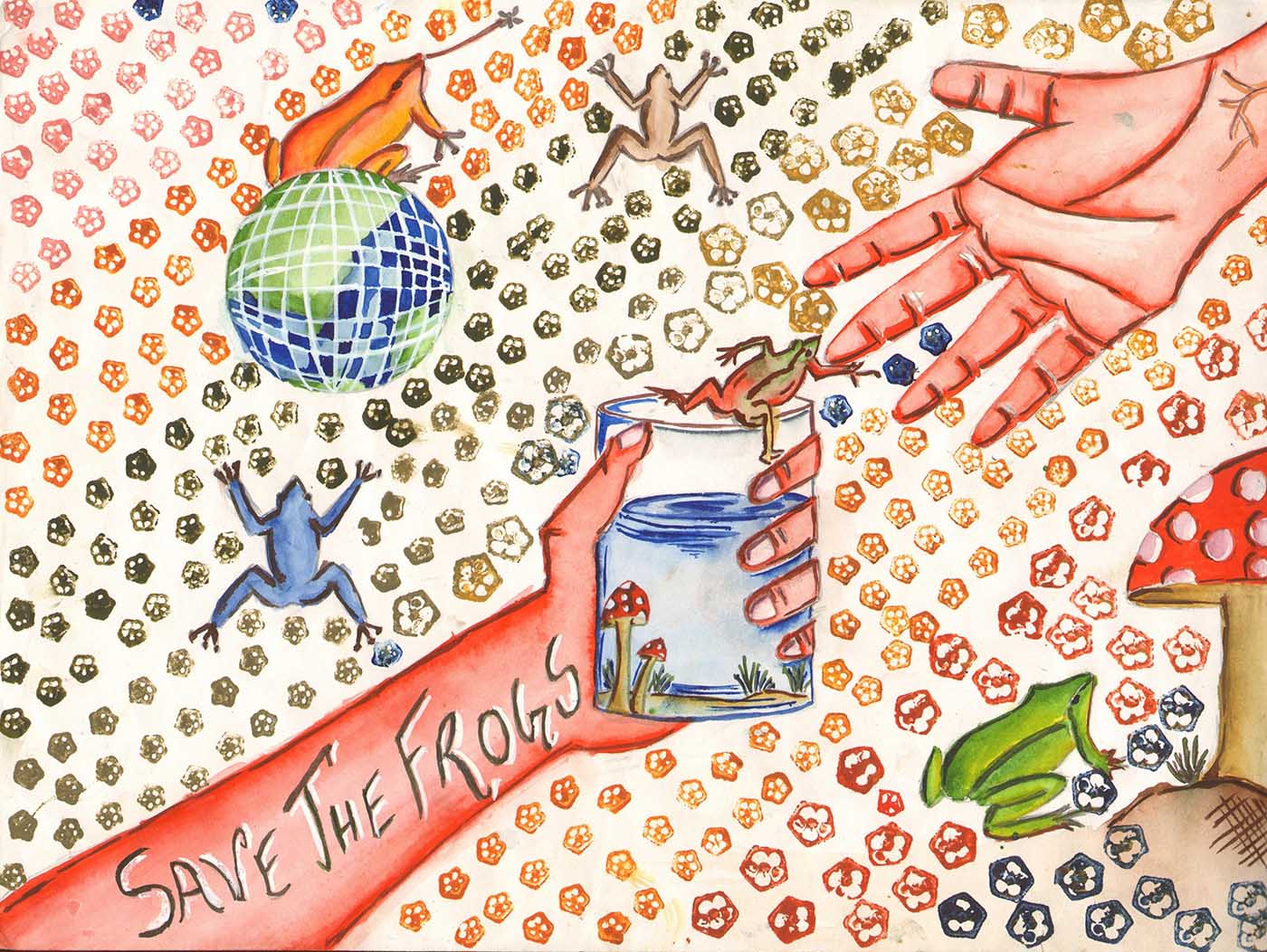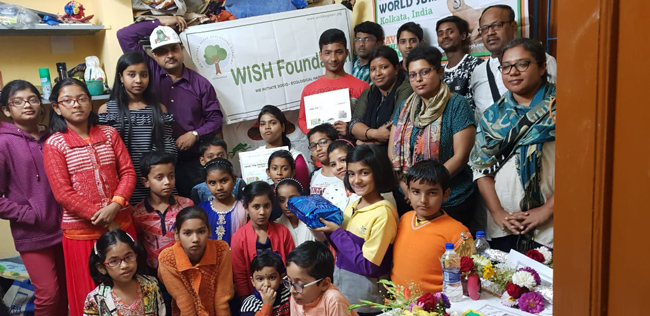Kids And Frogs In India
A note from Sarbani Nag, Founder of SAVE THE FROGS! India:
Kerry,
I am writing to you today to share a tiny story of inspiration. A student of class 8 attended the Save The Frogs Day in 2019 organised by WISH Foundation.
Today, her school teacher has asked her to talk about an animal that needs to be saved and she has thought to talk about frogs.
She has prepared a speech for this on her own and has sent it to me. I have edited the write up a bit and thought to share with you because you have made it possible.
Sankana Das of Class 8 has written:
A Frog Is As Important As A Tiger
“Today I will be talking about the tiny animals that live surrounding us like Frogs. Frogs are unique in many ways as they have no fur, scales or hair on their skin. So, any disturbance in the nature affect the amphibians first, hence, they are known as bio-indicators. They need to be monitored to have a healthy environment. They are equally important as a tiger but often overlooked or looked down upon. But the world of amphibiams is colourful and elegant. Their existence is threatened across the world because of us. That is why I have thought of this group to be saved.

Tigers, frogs and humans can co-exist in India. All have a right to live on a healthy planet.
Amphibians are a class of cold-blooded vertebrates made up of frogs, toads, salamanders, newts, and caecilians. The amphibians spend their larval or first half of their life underwater and then come out on land for the rest of their life.
Across the globe three types of amphibians are found. They are:
- Anura (Frogs and toads)
- Caudata – Salamanders and Newts
- Caecilians – limbless amphibians
Next I am going to talk about how frogs are important to us and what would happen if the last frog living on earth dies.
Frogs have an important place in the food chain as both predators and prey. As tadpoles, they eat algae, helping regulate blooms and reducing the chances of algal contamination. Many tadpoles eat larvae of other insect and act as bio-controlling agent. Frogs are an important source of food for a variety of animals, including birds, fish, monkeys and snakes. Hence, the decreasing number of frogs is creating an imbalance to the food chain. Frogs eat a number of insects. A decreasing frog population means increasing number of disease causing insects like mosquitoes and flies. Moreover, they have appeared on earth way much before than humans. Hence, they have equal rights to coexist with us.

Frog art from Vivekananda School, India SAVE THE FROGS! Art Contest
Next I would like to talk about how frogs are threatened in nature and how they find it difficult to live.
Habitat loss: Amphibians require wetlands to thrive and we, humans are destroying their habitat in the name of development.
Pollution: Frogs are very sensitive to pollution around them. Things that can hurt frogs include fertilizers, pesticides, and detergents. This is because they breathe and absorb water through their bare skin. The chemicals can easily enter their bodies through the skin. Bio-accumulation of pesticides or insecticides has a fatal effect on them.
Invasive species: These species can out compete the native species for resources, introduce new diseases, and prey on the native species. Like the cane toad in Australia, which is causing a lot of problems (outside of its native range).
Chytrid fungus: A tropical fungus wiping out frog population in Latin America, Costa Rica and in many places.

Frog art from India by Bapan Halder, 2012 SAVE THE FROGS! Art Contest
Lastly I would like to talk about how we can save the frogs.
We can save frogs by:
- Stop using pesticides and adopt organic farming
- Stop using pesticides and adopt organic farming
- Saving wetlands because frogs mostly live there.
Thank you!”

Lake Tso Moriri Korzok, Indian Himalaya


